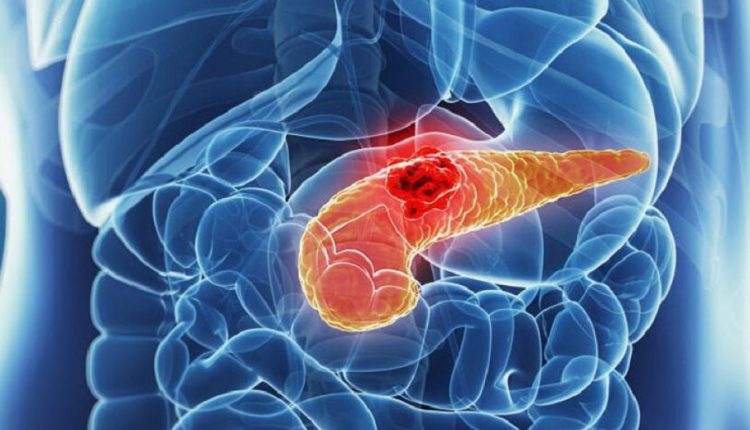
Pancreatic cancer: what are the characteristic symptoms?
Pancreatic cancer, which in 60% of cases occurs at the head, becomes evident when certain cells multiply uncontrollably and very aggressively invade the gland, the duodenum, the biliary tract and prematurely metastasise in other districts (mostly in the liver via the portal vein that passes through it)
The pancreas is a triangular-shaped organ located in the central and deepest portion of the abdomen, between the stomach and the spine
It is divided into three parts:
- the largest portion, which is in direct contact with the duodenum and is called the head;
- the middle one, which is in an intermediate position and is called the body;
- the thinner and more distal one, in contact with the spleen, which is called the tail.
The pancreas has a dual function, endocrine on the one hand and exocrine on the other
The first term refers to its ability to secrete into the bloodstream the hormones it synthesises (insulin and glucagon, which allow blood glucose to be regulated), while the exocrine function consists of the production of digestive enzymes that, when introduced directly into the digestive canal at the duodenal level, promote and condition the digestive process along with bile.
Pancreatic cancer: the incidence of the disease
Today, unfortunately, pancreatic cancer is still among the tumours with the most severe prognosis, partly because the disease, in its early stages (when it would undoubtedly have a higher margin of curability), gives no clear symptoms and by the time these appear it has already begun to spread to the surrounding organs and the chances of cure are very slim.
Over the past 15 years, the incidence of this disease in our country has increased by about 59%, with new diagnoses per year rising from 8,602 in 2002 to 13,700 this past year.
The characteristic symptoms of pancreatic cancer
Early diagnosis of pancreatic cancer as we have said is extremely difficult, as the initial symptoms of the disease are mostly rather non-specific, difficult to interpret and easily attributable to other morbid processes.
In fact, patients generally report the gradual onset of complaints such as anorexia, a state of general malaise, nausea, fatigue and pain in the mid-gastric region or in the back with weight loss, and this particularly in the more advanced stages of the disease.
Pain in the mid-gastric region is a common symptom in pancreatic cancer, with radiation to the mid-abdomen or lumbar region.
The presence of pain in the back is of particular concern as it most often indicates invasion by the tumour of the splanchnic nerve plexus, which is located in this area.
Often the pain is constant and progressive over time, particularly after a meal or when lying in bed at night.
Weight loss may be related partly to cancer-associated anorexia, but essentially to subclinical malabsorption caused by exocrine pancreatic insufficiency due to obstruction of the pancreatic duct by the tumour.
For these reasons, patients often complain of diarrhoea and foul-smelling fatty stools.
Nausea and early satiety due to gastric obstruction or slowed gastric emptying by the tumour may also contribute to weight loss.
In many cases, the onset of diabetes is difficult to control, months before the cancer is discovered, which is why the suspicion of pancreatic cancer should be considered in patients over 70 years of age with a new diagnosis of diabetes and without other risk factors for this disease.
The most characteristic sign of pancreatic head carcinoma is painless obstructive jaundice. Patients may present with acolic (white) stools, dark urine and an uncomfortable itchy skin as the only clinical signs, before they or their family members notice a change in skin colour.
Physicians can usually recognise clinical jaundice when total bilirubin reaches 2.5-3 mg% while patients or their relatives usually do not notice clinical jaundice until total bilirubin reaches 6-8 mg%. In many cases, a depressive state precedes the appearance of clinical symptoms of the disease, such as a thrombophlebitis migrans (Trousseau’s sign) or venous thrombosis (paraneoplastic syndrome).
Physical examination of pancreatic cancer
Pain in the mid-gastric region with lumbar irradiation, as we have pointed out, is the most common presenting symptom in patients with pancreatic cancer.
However, by the time symptoms become apparent, about one third of patients still experience no pain, one third moderate pain and one third severe pain.
However, all patients experience deep pain at some point during the clinical course.
Patients with clinical jaundice present with a palpable gallbladder (i.e. Courvoisier’s sign) and scratching skin excoriations due to intractable itching.
In more advanced stages patients manifest ascites, a palpable abdominal mass, hepatomegaly from liver metastases or splenomegaly from portal vein obstruction.
Subcutaneous metastases (also called Sister Mary Joseph’s nodule or nodules) in the paraumbilical area indicate advanced disease.
A metastatic mass in the pelvic cavity may be palpable on rectal examination (Blumer’s sign).
A metastatic node may be palpable behind the medial end of the left clavicle (Virchow’s node).
However, other lymph nodes in the cervical area may also be involved.
Read Also:
Emergency Live Even More…Live: Download The New Free App Of Your Newspaper For IOS And Android
Chemotherapy: What It Is And When It Is Performed
Ovarian Cancer: Symptoms, Causes And Treatment
Breast Carcinoma: The Symptoms Of Breast Cancer
CAR-T: An Innovative Therapy For Lymphomas
What Is CAR-T And How Does CAR-T Work?
Radiotherapy: What It Is Used For And What The Effects Are
Acute Pancreatitis: Causes, Symptoms, Diagnosis And Treatment
Gestational Diabetes, What It Is And How To Deal With It
Pancreatic Cancer, A New Pharmacological Approach To Reduce Its Progression
What Is Pancreatitis And What Are The Symptoms?
Kidney Stones: What They Are, How To Treat Them
Symptoms And Treatment For Hypothyroidism
Hyperthyroidism: Symptoms And Causes
Surgical Management Of The Failed Airway: A Guide To Precutaneous
Thyroid Cancers: Types, Symptoms, Diagnosis



